I’ll never forget the moment I stood frozen in the dimly lit chamber, staring at those ancient frescoes. The colors – vivid blues, deep reds, and golden yellows – looked as if they had been painted yesterday, not 2,500 years ago. What struck me most wasn’t just their remarkable preservation, but how they connected me directly to the people of Pompeii and Herculaneum who once gazed at these same images in their daily lives.
The experience was nothing like viewing art in modern museums. These weren’t paintings created for public display behind protective glass. These were intimate scenes decorating the homes of ancient Romans, revealed to us only because of the catastrophic eruption that preserved them in ash.
Walking through those villa rooms, I saw women with elaborately styled hair similar to findings from recent excavations, their fashion and beauty routines frozen in time.
My camera struggled to capture what my eyes were seeing – the perfect light, the intricate details, the sheer age of these masterpieces. Ancient Egyptians had already developed their blue pigments thousands of years earlier, as I learned later, but seeing these colors so vibrant after two millennia was a profound reminder of art’s power to transcend time. I touched the cool wall next to a fresco (where permitted) and felt a connection to the artist who once stood in that exact spot, paintbrush in hand.

The Etruscans: Unveiling Ancient Art
Standing in those ancient tombs, I was transported back to a civilization that thrived before Rome’s dominance. The vivid colors and intricate details of Etruscan art have survived millennia, offering us a rare glimpse into their sophisticated culture.
Who Were the Etruscans?
The Etruscans flourished in central Italy from about 800 BCE until they were absorbed by the Romans around 100 BCE. They built powerful city-states across what we now call Tuscany, Umbria, and Lazio.
Their civilization was sophisticated and wealthy, with extensive trade networks across the Mediterranean. Many aspects of their culture—from religious practices to artistic techniques—later influenced Roman society.
What struck me most while researching their history was how the Etruscans valued the afterlife. Their elaborate tomb decorations weren’t just art—they were preparations for the next world.
The necropolises (city of the dead) at Tarquinia contain some of the most incredible examples of their burial practices, with painted chambers hiding beneath the Italian countryside.
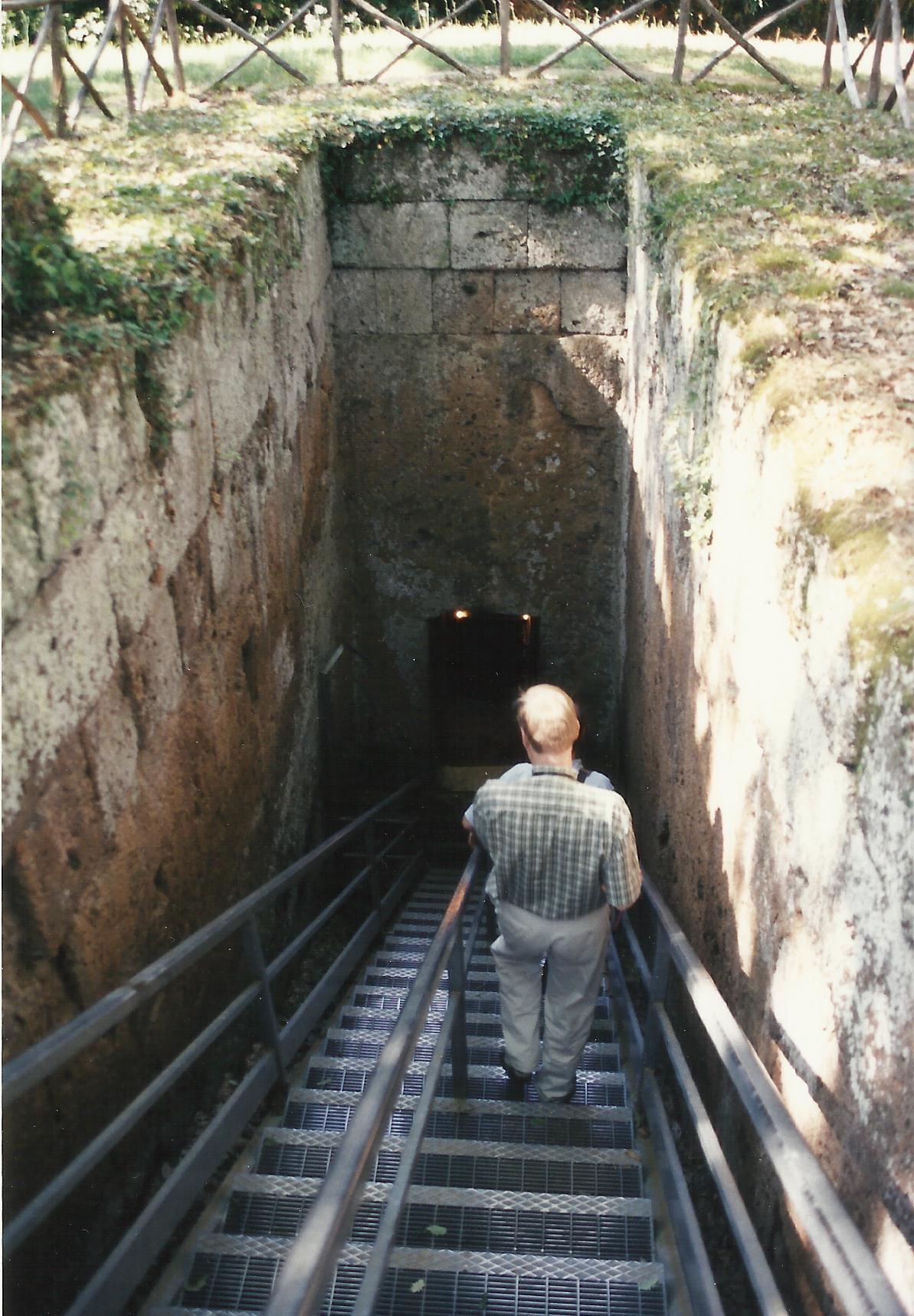
Etruscan Art Overview
Etruscan artisans created works of stunning beauty using techniques that were advanced for their time. The newly discovered tomb paintings at Tarquinia showcase vibrant red frescoes that have retained their color for 2,500 years!
These wall paintings often depict:
- Banquet scenes
- Athletic competitions
- Musicians and dancers
- Daily life activities
- Religious ceremonies
What amazed me was the use of metallurgical workshops in some tomb paintings, revealing their technical skill with bronze and precious metals.
Their architecture was equally impressive, with arched gateways and temple designs that later inspired Roman builders. I found myself particularly drawn to their terra-cotta sculptures—lifelike figures that seem to capture personalities rather than just appearances.

Encountering the Frescoes: A Vivid Tableau
Standing there, I was immediately struck by the incredible preservation of color that had survived millennia. The frescoes revealed themselves as living documents of ancient artistic mastery.
The Frescoes’ Significance
These 2,500-year-old masterpieces represent one of the most significant surviving examples of ancient painting techniques. Unlike many weathered ruins where colors have faded to ghostly outlines, these frescoes retained vibrant reds, blues, and ochres that seemed impossible for their age.
The figures depicted in the tableau told stories of daily life, religious ceremonies, and important historical events. I noticed how the artists had captured human expressions with remarkable sensitivity, creating a connection across time.
Similar to the recently discovered medieval fresco in the Aventine church, these ancient works served both decorative and educational purposes, allowing people to “read” stories visually in times when literacy was uncommon.
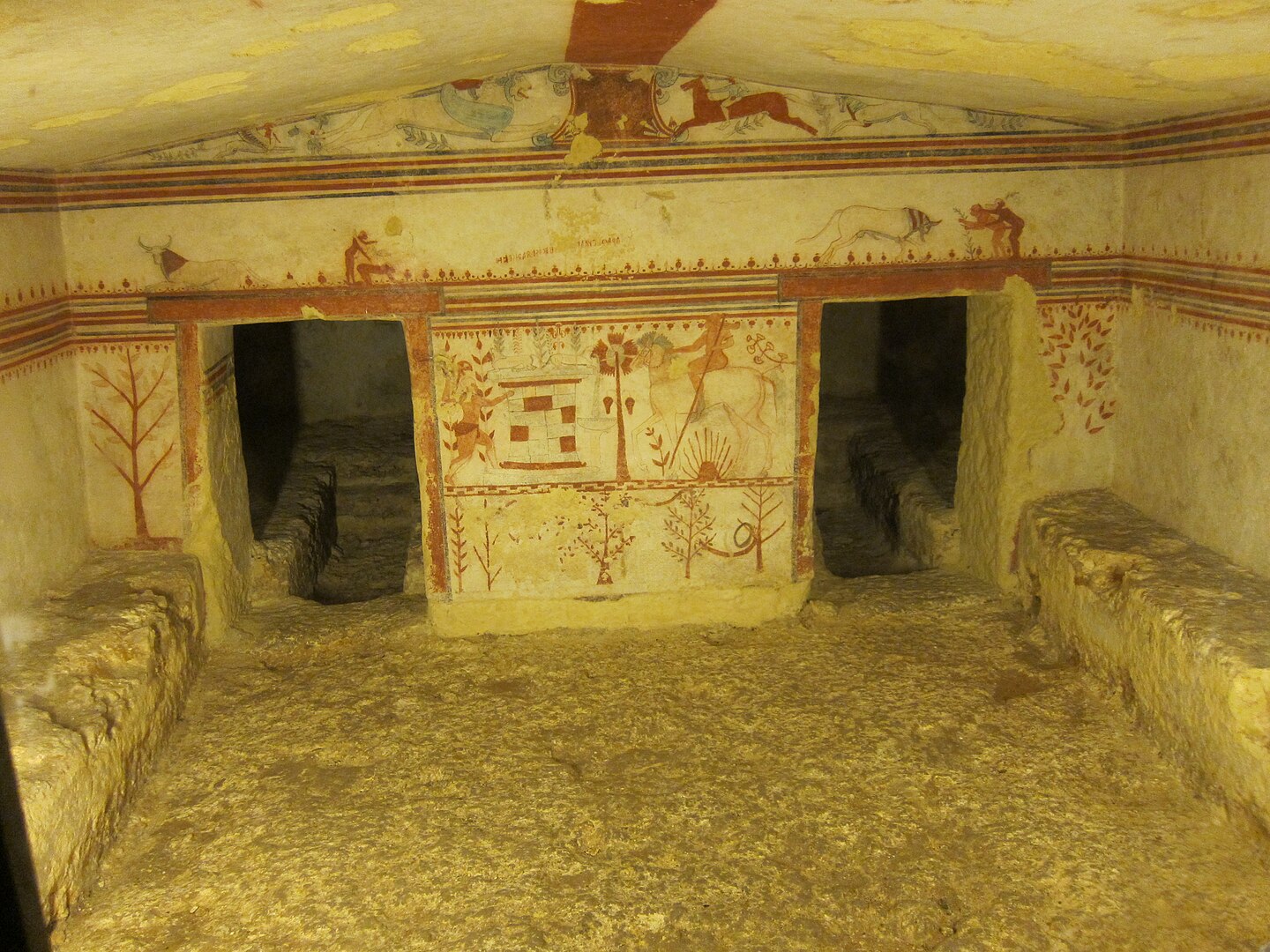
Analyzing the Techniques
The artists used natural pigments derived from minerals, plants, and even insects to create their palette. Reds came from iron oxide, blues from ground lapis lazuli, and yellows from various clay sources.
What amazed me most was the application method. The painters worked on wet plaster (true “fresco” technique), which chemically bonded the pigments to the wall as it dried. This explains the incredible preservation—the color became part of the wall itself.
I leaned in closely to examine the brushwork. Some sections showed delicate, precise lines while others displayed bold, confident strokes. The artists clearly understood light and shadow, creating dimensional figures that seemed to move when viewed from different angles.
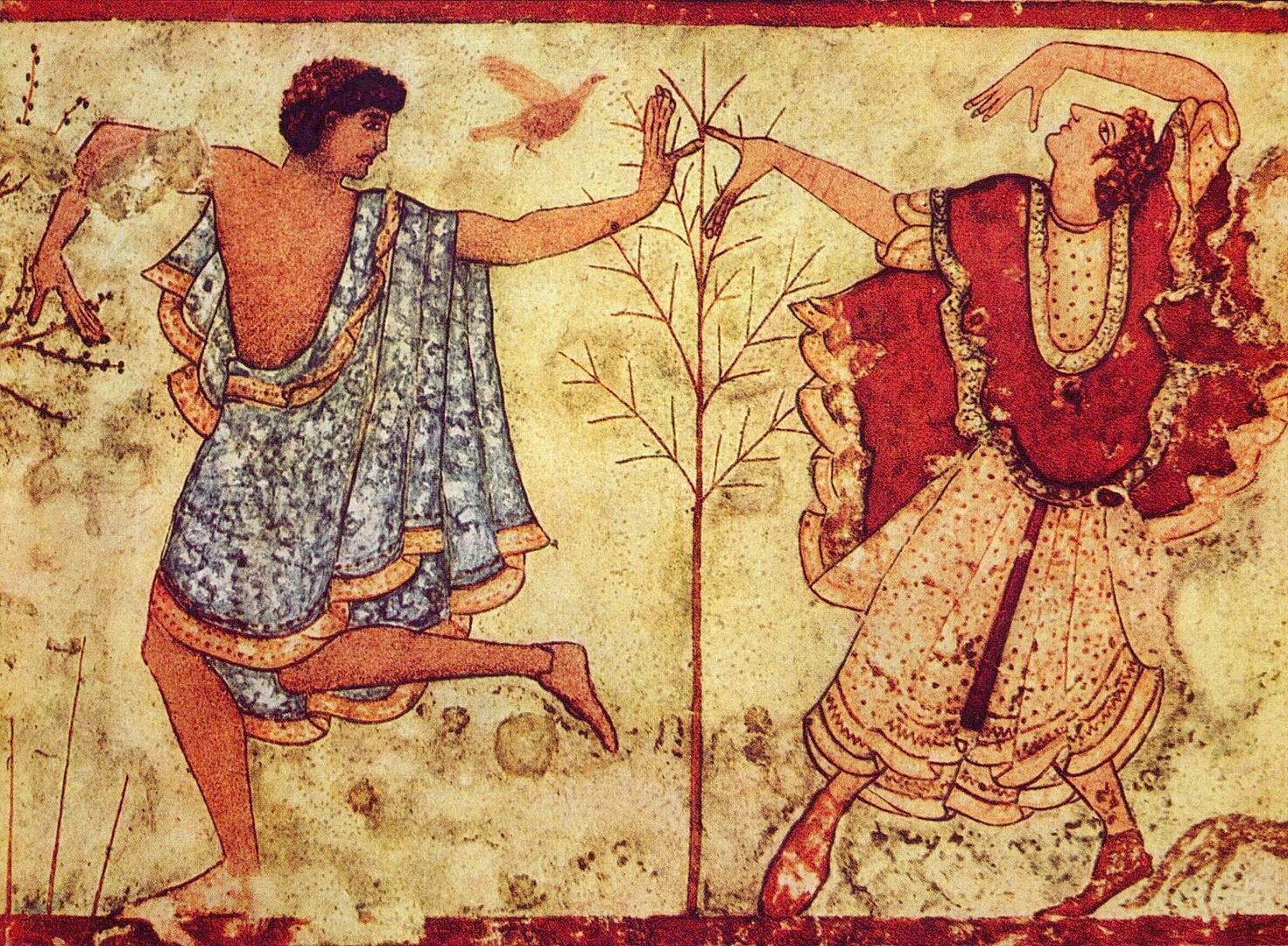
Intersecting Cultures: Native and Etruscan Parallels
As I explored these ancient Etruscan tombs, I couldn’t help but notice striking similarities between Etruscan art and Native American artistic traditions. Both cultures created vibrant artwork that connected deeply to spiritual beliefs and natural elements.
Native American Influence
The rich red pigments in the Etruscan tomb paintings reminded me of similar colors found in Native American rock art. Many Native American tribes created vivid paintings using natural minerals that have survived for centuries, just like these Etruscan works.
When examining the Etruscan frescoes, I noticed symbolic animal representations that parallel those in Native American art. Both cultures assigned spiritual significance to animals, portraying them as messengers between worlds.
The connection to ancestry is another shared theme. Native Americans honor ancestors through art and ceremony, while Etruscans created elaborate tomb paintings to celebrate the deceased’s journey to the afterlife.
I was fascinated by how both cultures incorporated natural elements into their art. Earth pigments, plant-based dyes, and minerals created palettes that have withstood thousands of years.
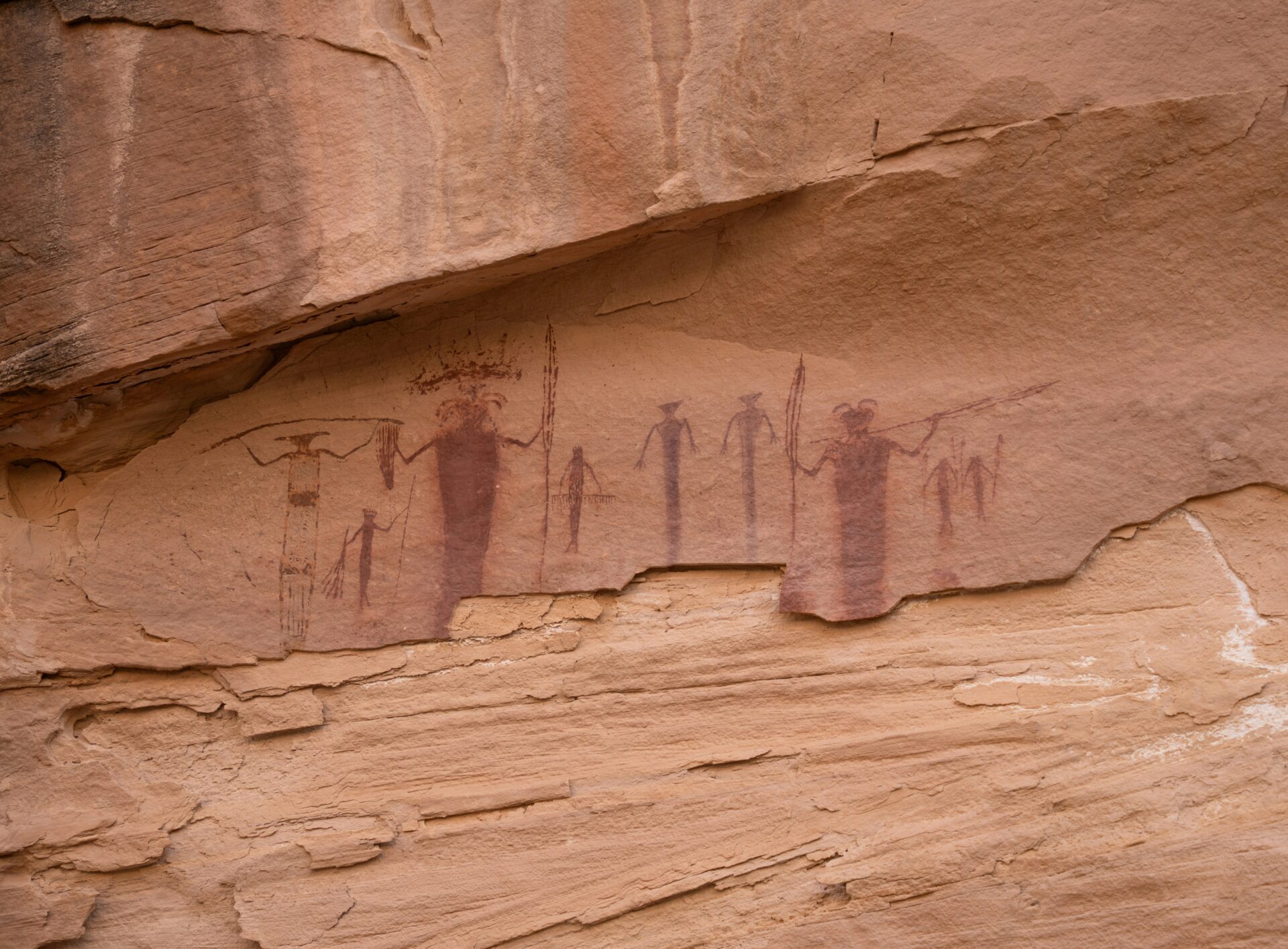
Etruscans and Their Neighbors
The Etruscans developed a unique cultural identity while maintaining active trade with neighboring civilizations. Their tombs in Tarquinia showcase this cultural exchange through artistic elements borrowed from Greek and Phoenician traditions.
What struck me most about the 2,500-year-old necropolis was how the Etruscans adapted foreign influences while maintaining their distinct style. The vibrant wall paintings demonstrate sophisticated artistic techniques unlike any other Mediterranean culture of the time.
The Etruscans were remarkable innovators. Research shows they developed advanced beekeeping systems in northern Italy to produce honey and beeswax, likely used in some of their artistic processes.
In The Footsteps of Greatness: Following An Artistic Legacy
Standing before those ancient frescoes, I couldn’t help but think about the continuous thread of artistic expression that connects us across centuries. Artists throughout history have inspired each other, building upon techniques and visions of those who came before them.
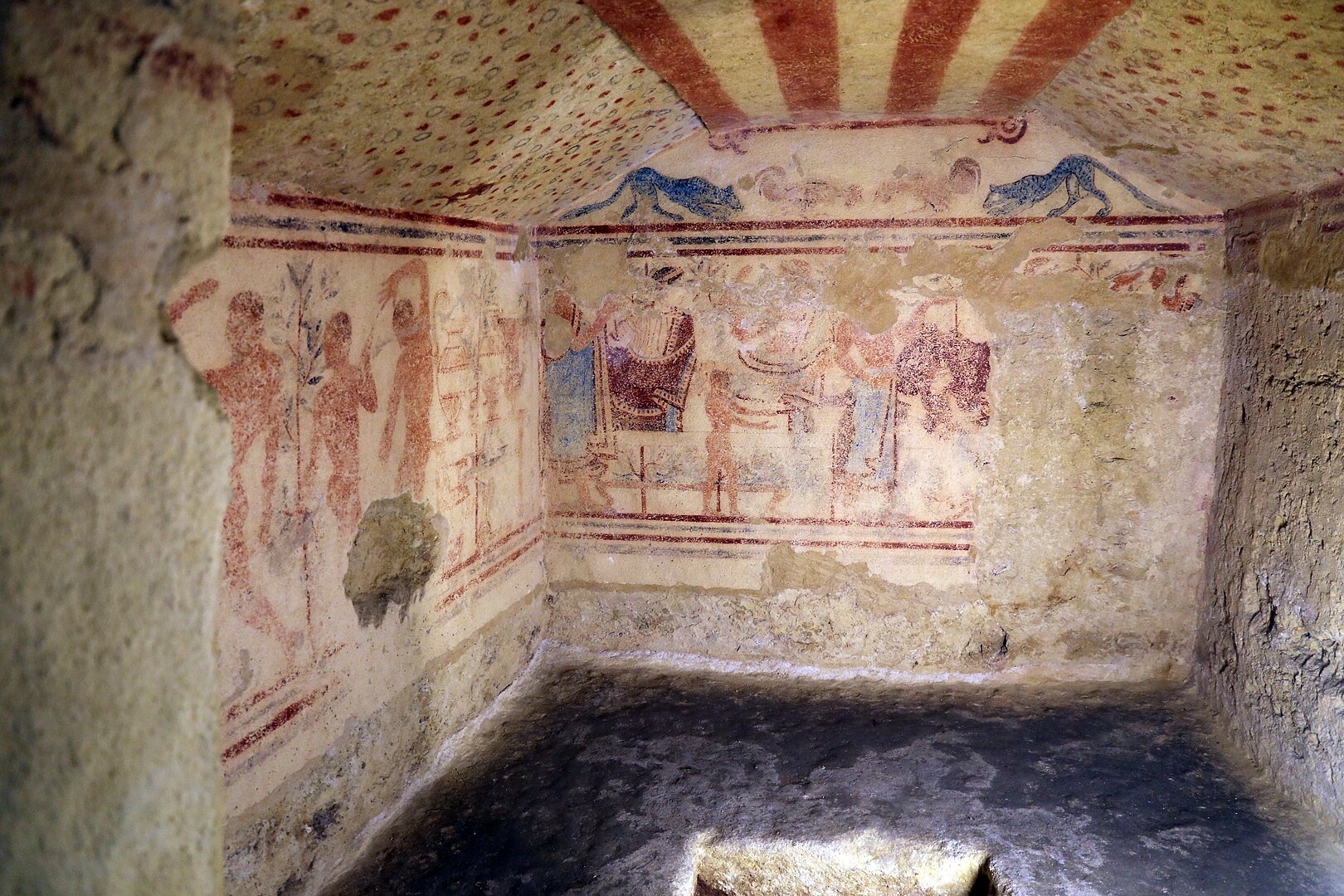
From Gilbert Stuart to Modern Artists
Gilbert Stuart, famous for his portraits of George Washington, represents just one link in this long chain of artistic influence. His meticulous attention to detail and mastery of color mirrors what I saw in those ancient frescoes. When I visited the art museum in Taos, New Mexico, I noticed how many contemporary painters still reference his techniques.
The landscapes of New Mexico have inspired generations of artists since the early 1900s. The dramatic light and vast skies create natural canvases that continue to draw creators from around the world.
Photography has added another dimension to this artistic legacy. Modern photographers capture the same vistas and cultural moments that painters once documented, creating a visual dialogue across mediums and time.

Contemporary Descendants
Today’s artists in Taos carry forward traditions while adding their own modern interpretations. I met a painter whose great-grandmother was part of the original Taos art colony in the 1920s.
“My family has been painting these mountains for four generations,” she told me as we looked out over the landscape. “Each of us sees something different in the same view.”
Digital artists now explore ancient artistic concepts using cutting-edge technology. One creator I encountered uses 3D modeling to reimagine classical fresco techniques, bringing them into virtual spaces where viewers can walk through immersive color fields.
The artistic community in New Mexico especially honors this connection between past and present, with mentorship programs that pair established artists with newcomers.
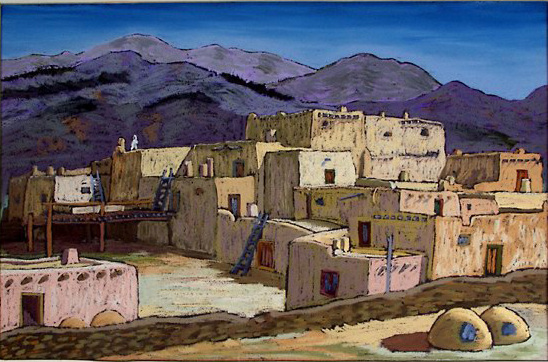
Preserving Artistic Heritage
Conservation efforts at museums worldwide protect these artistic legacies for future generations. I watched conservators at work during my visit, using specialized tools to carefully maintain fragile pigments.
Traditional techniques are being documented through detailed videos and workshops. In Taos, I participated in a natural pigment class where we ground minerals just as artists did centuries ago.
The digital preservation of art has become increasingly important. High-resolution photography and 3D scanning create permanent records of works that might otherwise deteriorate over time.
Community support plays a crucial role in preservation. Local art foundations in New Mexico have raised funds to purchase historically significant works that might otherwise leave the region, keeping artistic heritage connected to its origins.

The Creative Process: Understanding Ancient Techniques
Standing face-to-face with ancient artwork, I’m always struck by how artisans developed such enduring techniques with limited resources. Their creative process combined careful preparation, specialized knowledge, and materials harvested from the natural world.
The Fresco Technique
The fresco technique used in these 2,500-year-old paintings involves applying pigment to wet plaster, creating a chemical bond that preserves color for millennia. Unlike modern painting, artists had to work quickly before the plaster dried. They often divided walls into sections called “giornate” (day’s work) to manage this challenge.
I noticed the painters first created preliminary sketches using red ochre or charcoal directly on the wall. Then they applied a rough plaster layer followed by a finer, smoother coat.
The pigments themselves came from natural sources – minerals, plants, and even insects. Blues were particularly precious, often made from crushed lapis lazuli brought along trade routes from Afghanistan.

Traditional Media in Etruscan Art
Etruscan artists mastered multiple media beyond frescoes. Their visual art repertoire included terracotta sculptures, bronze work, and delicate jewelry that showcased their technical skill.
I was fascinated to learn they created preliminary drawings using charcoal sticks made from burned wood. These sketches helped plan complex scenes before committing to final materials.
Their palette featured earth tones from locally sourced clay and minerals. Reds came from iron oxide, while blacks were often created using carbon from burned organic materials.
What impressed me most was their understanding of different materials’ properties. They knew which pigments could withstand the chemical reactions of wet plaster and which required different binding agents. This knowledge passed through generations of master artists to apprentices.
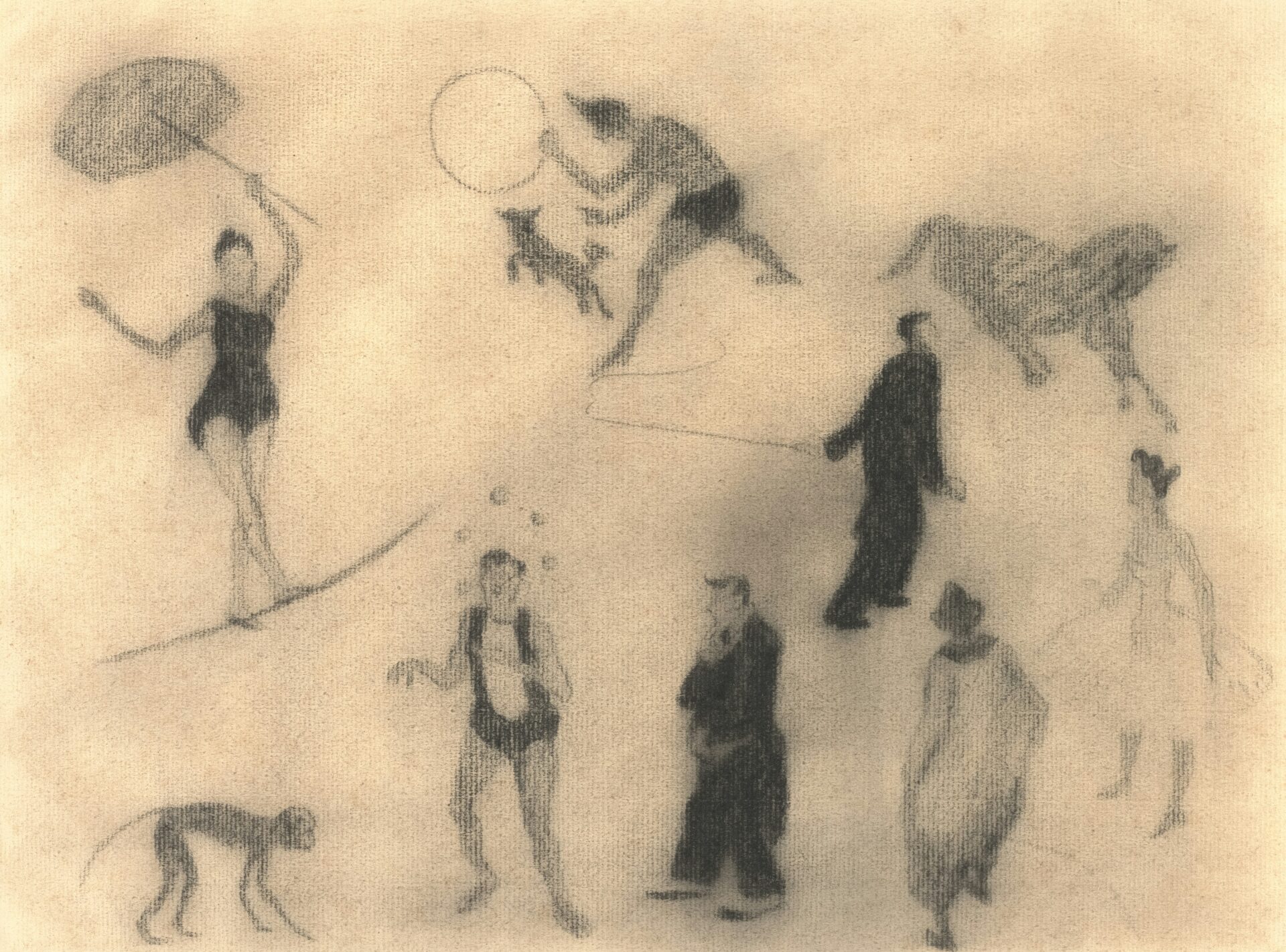
Reflections on Timelessness: The Power of Preservation
Standing before these ancient frescoes, I was struck by how preservation efforts create bridges across millennia, allowing us to connect with our shared human history through art.
The Role of Art in History
Art serves as a visual record of human civilization, telling stories that written accounts alone cannot capture. When I gazed at these 2,500-year-old frescoes, I wasn’t just seeing pretty pictures—I was witnessing frozen moments of ancient life.
These vibrant scenes revealed how people lived, what they valued, and how they viewed their world. The fresco technique itself, which binds pigment to wet plaster, was a deliberate choice by ancient artists seeking permanence.
Governments throughout history have recognized this power. Rulers commissioned grand artworks not just for beauty but as political statements—visual declarations of authority and cultural values that would outlast their reigns.
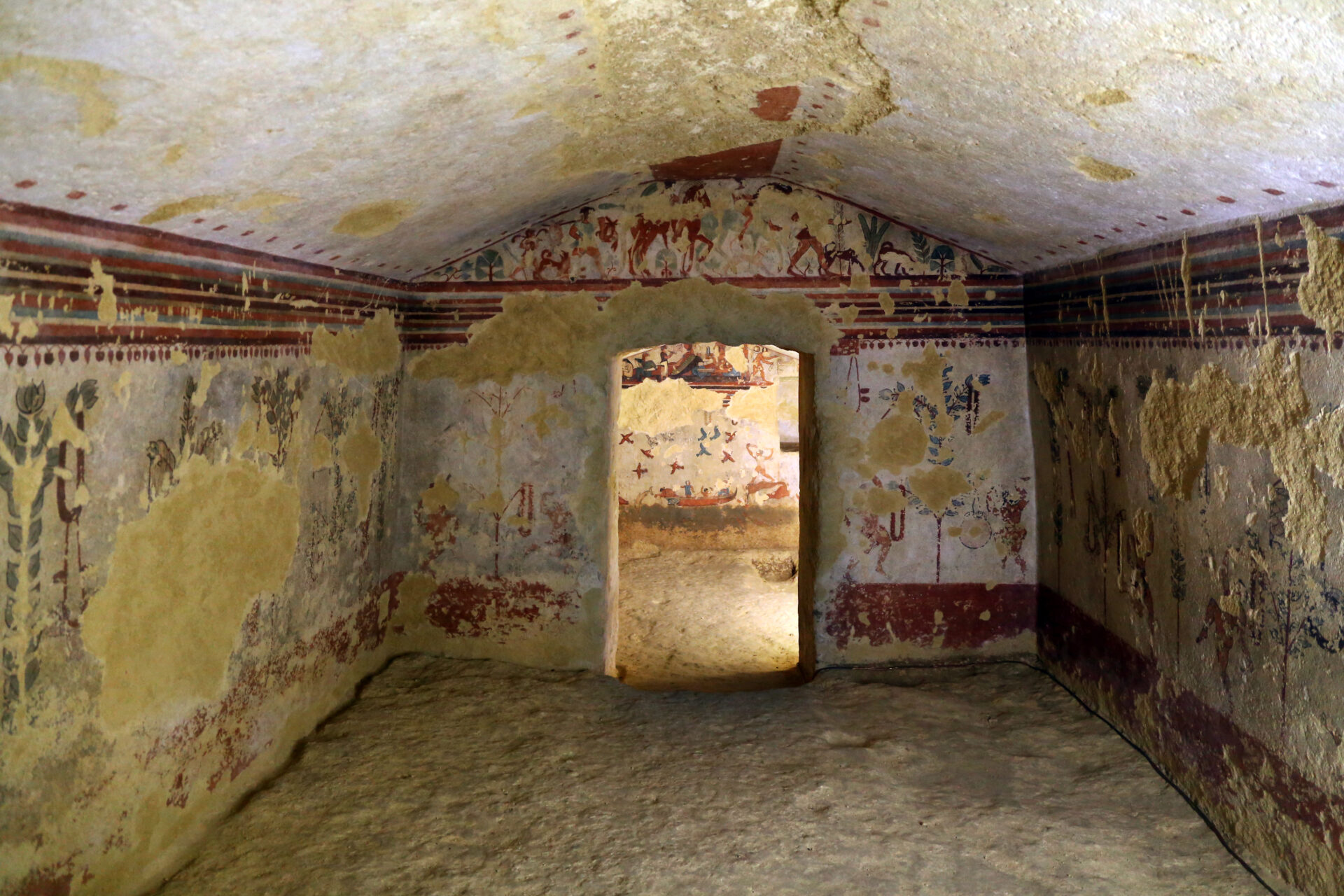
Conservation Efforts
The pristine condition of these ancient frescoes didn’t happen by accident.
Modern conservation combines cutting-edge science with traditional knowledge to preserve our artistic heritage.
I learned that conservators use specialized techniques like non-invasive imaging and micro-climate control to protect these delicate works.
Their work requires incredible patience. Sometimes, they spend years on a single restoration project.
Museums and archaeological sites now employ sophisticated environmental monitoring systems to protect artifacts from humidity, light damage, and pollution.
These efforts aren’t cheap. They require significant government funding and international cooperation.
What amazed me most was how conservation bridges ancient craftsmanship with modern technology.
The same basic fresco technique that Mediterranean artists perfected centuries ago still influences conservation approaches today.

